Rohit Sahu's Blog, page 6
October 6, 2020
Ayurveda For Beginners: Pitta
Ayurveda, which derives from ancient Vedic scriptures, is a 5,000 year-old medical ideology and philosophy based on the idea that we are all made up of different types of energy.
There are three Doshas in Ayurveda that describe the dominant state of mind/body: Vata, Pitta, and Kapha. While all three are present in everyone, Ayurveda suggests that we each have a dominant Dosha that is unwavering from birth, and ideally an equal (though often fluctuating) balance between the other two. If Doshas are balanced, we are healthy; when they are unbalanced, we develop a disorder commonly expressed by skin problems, impaired nutrition, insomnia, irritability, and anxiety.
Vata, Pitta, and Kapha are all important to our biology in some way, so no one is greater than, or superior to, any other. Each has a very specific set of basic functions to perform in the body.
That said, when the Doshas are out of control, our wellbeing can be damaged. However, before we get into the particulars of each of the three Doshas, it is helpful to understand their basic nature and their wider function in the natural world.
Throughout Ayurveda, the most basic building blocks in the material world are the five elements: space, air, fire, water, and earth.
Vata is characterized by the mobile nature of Air (Wind) energy.
Pitta embodies the transformative nature of Fire energy.
And Kapha reflects the binding nature of Water energy.
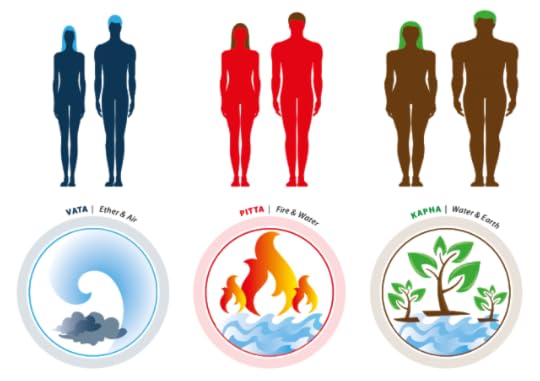
Pitta is the hottest, oiliest, and sharpest of the three Doshas of Ayurveda. When you feel overheated in any way, there may be an abundance of the Pitta Dosha inside your body.
What's The Meaning of Pitta?
According to Ayurveda, Pittas are willing, strong, dominant, creative, driven, and definitive. If Pitta is out of control, they can become irritable, furious, judgmental, hostile, and even violent. They may have an acidic stomach, oversensitive skin, extreme body pain, or heartburn.
In order to recover Pitta's equilibrium, it is advised to eat foods that neutralize Pitta's warm qualities. Out of control Pitta should resist spicy foods and heating vegetables such as garlic, onions or chili peppers. It is also advised that Yoga Asanas be performed to keep it in check.
Transformation is the primary function of Pitta. The Pitta Dosha governs all the different forms of digestion and transformation that manifests in our mind and body—from digesting sensory impressions and emotional reactions to transforming Chyle (lymph and fatty matter from partially digested food) into protoplasmic substances such as sperm and ova, and how we discriminate between right and wrong.
Pitta is closely linked to Agni (Digestive Fire). The properties are pungent, hot, penetrating, greasy, oily, sticky, liquid, spreading, and sour. The primary locus of Pitta is the small intestine where most chemical degradation happens, but it also exists in the eyes, blood, sweat glands, stomach, and lymph.
Made up of Agni (Fire) and Jala (Water), Pitta seems to be a contradiction in terms, but its two constituents are actually complementary. The liquid nature of Pitta protects the tissues from the destructive aspects of fire and enables Pitta’s metabolic properties to flow through the body in fluids such as bile, digestive enzymes, and hormones.
In addition to playing an important role in the digestive and endocrine processes, Pitta influences body temperature, visual perception, appetite, thirst, and the quality of the skin. Enable GingerCannot connect to Ginger Check your internet connection
or reload the browserDisable in this text fieldEditEdit in GingerEdit in Ginger×
Symptoms of Pitta Dosha Imbalance:
Physical:
· • Heightened hunger and/or thirst
• Urinary tract irritation
• Early hair loss or grey hair, greasy hair, excessive body hair growth
• Hormonal deficiency
• Giddiness and headaches/migraines
• Hot bursts and demand for things that have a cooling impact on the body
• Foul breath/body odor
• Bloated swelling, acne, cold sore throat
• Sickness when skipping meals
• Nausea
• Tenderness in breasts/testicles
• Discoloration of the skin
• Burning feelings in the body
• Sensitivity to the sun and heat
Behavioral:
·• • Impatience
• Irritation
• Excessive Ego
• An intense sensation of heat in the body
• Agitation, rage, irritability
• Judgment, impatience, disapproval, intolerance
• Extreme perfectionist tendencies
• Overly targeted/result-oriented
• Dissatisfaction
• Envy
Ask these questions to see if you have to manage Pitta:
1. Do you notice some pain in the hot weather?
2. Are you a perfectionist, or look for perfection in your stuffs?
3. Do you get hot flashes?
4. Is your skin gritty and sensitive to rashes and rashes?
5. Are you always frustrated or impatient?
6. Do you have an abundance of stomach acid?
7. Are you having loose bowel movements?
If you answered yes to most of these questions, you have to balance Pitta.
1. Perform Cooling Activities
2. Meditate Daily
3. Balance Your Work Pace
4. Don’t Skip Meals
5. Go For Oil Massage (Abhyanga)
6. Be Joyful
Tastes That Pacify Pitta
Salty
• The salty flavor is perhaps entirely derived from the salt itself.
• Like the sour taste, it is salt's light, dry, and oily essence that makes Pitta worse.
• Salt taste can disrupt the balance of the blood, inhibit sensory organs, increase fire, worsen the skin, increase inflammation, trigger tissue breakup, trigger water retention, high blood pressure, intestinal inflammation, gray hair, wrinkles, and excess thirst. It can also increase our desire for stronger flavors, which can trigger Pitta far more.
Extra Precautions:
1. The key lifestyle advice to balance Pitta is to stay cool, both physically and emotionally. Avoid going out in the heat of the day, particularly on an empty stomach or after consuming tangy or spicy foods. Avoid to workout when it's hot. Take a walk away from situations that make you heated.
2. Shield yourself from the sun. Keep cool in warm weather by wearing loose cotton clothing. Wear a wide-brimmed cap and shades to shield your eyes while you're out. Drink enough of room temperature water.
3. Water-based practices are suitable for Pitta-dominant people. Consider swimming or aqua-aerobics to stay healthy and cool. Strolling after sunset, particularly along the coastline, is also a nice way to bring some leisurely activity into your day.
4. When Pitta Dosha is out of control, you can notice that you may fall asleep without much difficulty, but in the very early hours, you wake up and find it hard to get back to sleep. It's crucial to get to bed early, so you can have a good sleep every night. A cup of warm milk with some cardamom can be beneficial before bedtime.
5. Balance work and life. Set aside some time for rest and relaxation every day, don't just get so lost in the job that you can't stay away from it.
6. Set aside approximately 30 minutes per day for meditation, to help balance the heart and feelings, and to improve body-mind-spirit synchronization.
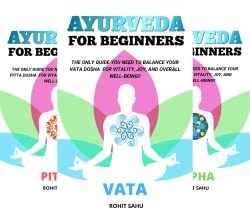
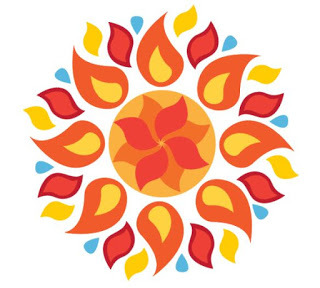
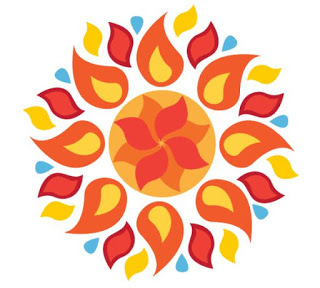
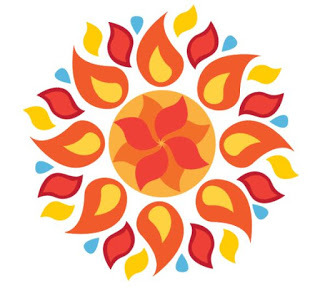
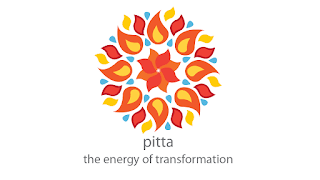
Enable GingerCannot connect to Ginger Check your internet connection
or reload the browserDisable in this text fieldEditEdit in GingerEdit in Ginger×Enable GingerCannot connect to Ginger Check your internet connection
or reload the browserDisable in this text fieldEditEdit in GingerEdit in Ginger×
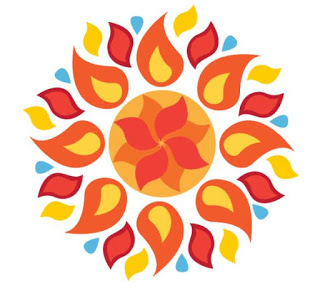
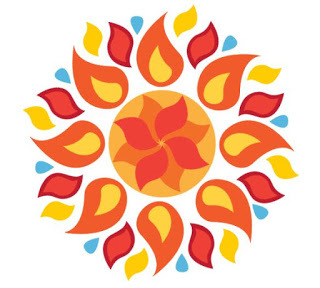
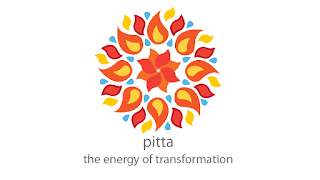
Ayurveda, which derives from ancient Vedic scriptures, is...
Ayurveda, which derives from ancient Vedic scriptures, is a 5,000 year-old medical ideology and philosophy based on the idea that we are all made up of different types of energy.
There are three Doshas in Ayurveda that describe the dominant state of mind/body: Vata, Pitta, and Kapha. While all three are present in everyone, Ayurveda suggests that we each have a dominant Dosha that is unwavering from birth, and ideally an equal (though often fluctuating) balance between the other two. If Doshas are balanced, we are healthy; when they are unbalanced, we develop a disorder commonly expressed by skin problems, impaired nutrition, insomnia, irritability, and anxiety.
Vata, Pitta, and Kapha are all important to our biology in some way, so no one is greater than, or superior to, any other. Each has a very specific set of basic functions to perform in the body.
That said, when the Doshas are out of control, our wellbeing can be damaged. However, before we get into the particulars of each of the three Doshas, it is helpful to understand their basic nature and their wider function in the natural world.
Throughout Ayurveda, the most basic building blocks in the material world are the five elements: space, air, fire, water, and earth.
Vata is characterized by the mobile nature of Air (Wind) energy.
Pitta embodies the transformative nature of Fire energy.
And Kapha reflects the binding nature of Water energy.

Pitta is the hottest, oiliest, and sharpest of the three Doshas of Ayurveda. When you feel overheated in any way, there may be an abundance of the Pitta Dosha inside your body.
What's The Meaning of Pitta?
According to Ayurveda, Pittas are willing, strong, dominant, creative, driven, and definitive. If Pitta is out of control, they can become irritable, furious, judgmental, hostile, and even violent. They may have an acidic stomach, oversensitive skin, extreme body pain, or heartburn.
In order to recover Pitta's equilibrium, it is advised to eat foods that neutralize Pitta's warm qualities. Out of control Pitta should resist spicy foods and heating vegetables such as garlic, onions or chili peppers. It is also advised that Yoga Asanas be performed to keep it in check.
Transformation is the primary function of Pitta. The Pitta Dosha governs all the different forms of digestion and transformation that manifests in our mind and body—from digesting sensory impressions and emotional reactions to transforming Chyle (lymph and fatty matter from partially digested food) into protoplasmic substances such as sperm and ova, and how we discriminate between right and wrong.
Pitta is closely linked to Agni (Digestive Fire). The properties are pungent, hot, penetrating, greasy, oily, sticky, liquid, spreading, and sour. The primary locus of Pitta is the small intestine where most chemical degradation happens, but it also exists in the eyes, blood, sweat glands, stomach, and lymph.
Made up of Agni (Fire) and Jala (Water), Pitta seems to be a contradiction in terms, but its two constituents are actually complementary. The liquid nature of Pitta protects the tissues from the destructive aspects of fire and enables Pitta’s metabolic properties to flow through the body in fluids such as bile, digestive enzymes, and hormones.
In addition to playing an important role in the digestive and endocrine processes, Pitta influences body temperature, visual perception, appetite, thirst, and the quality of the skin. Enable GingerCannot connect to Ginger Check your internet connection
or reload the browserDisable in this text fieldEditEdit in GingerEdit in Ginger×
Symptoms of Pitta Dosha Imbalance:
Physical:
· • Heightened hunger and/or thirst
• Urinary tract irritation
• Early hair loss or grey hair, greasy hair, excessive body hair growth
• Hormonal deficiency
• Giddiness and headaches/migraines
• Hot bursts and demand for things that have a cooling impact on the body
• Foul breath/body odor
• Bloated swelling, acne, cold sore throat
• Sickness when skipping meals
• Nausea
• Tenderness in breasts/testicles
• Discoloration of the skin
• Burning feelings in the body
• Sensitivity to the sun and heat
Behavioral:
·• • Impatience
• Irritation
• Excessive Ego
• An intense sensation of heat in the body
• Agitation, rage, irritability
• Judgment, impatience, disapproval, intolerance
• Extreme perfectionist tendencies
• Overly targeted/result-oriented
• Dissatisfaction
• Envy
Ask these questions to see if you have to manage Pitta:
1. Do you notice some pain in the hot weather?
2. Are you a perfectionist, or look for perfection in your stuffs?
3. Do you get hot flashes?
4. Is your skin gritty and sensitive to rashes and rashes?
5. Are you always frustrated or impatient?
6. Do you have an abundance of stomach acid?
7. Are you having loose bowel movements?
If you answered yes to most of these questions, you have to balance Pitta.
1. Perform Cooling Activities
2. Meditate Daily
3. Balance Your Work Pace
4. Don’t Skip Meals
5. Go For Oil Massage (Abhyanga)
6. Be Joyful
Tastes That Pacify Pitta
Salty
• The salty flavor is perhaps entirely derived from the salt itself.
• Like the sour taste, it is salt's light, dry, and oily essence that makes Pitta worse.
• Salt taste can disrupt the balance of the blood, inhibit sensory organs, increase fire, worsen the skin, increase inflammation, trigger tissue breakup, trigger water retention, high blood pressure, intestinal inflammation, gray hair, wrinkles, and excess thirst. It can also increase our desire for stronger flavors, which can trigger Pitta far more.
Extra Precautions:
1. The key lifestyle advice to balance Pitta is to stay cool, both physically and emotionally. Avoid going out in the heat of the day, particularly on an empty stomach or after consuming tangy or spicy foods. Avoid to workout when it's hot. Take a walk away from situations that make you heated.
2. Shield yourself from the sun. Keep cool in warm weather by wearing loose cotton clothing. Wear a wide-brimmed cap and shades to shield your eyes while you're out. Drink enough of room temperature water.
3. Water-based practices are suitable for Pitta-dominant people. Consider swimming or aqua-aerobics to stay healthy and cool. Strolling after sunset, particularly along the coastline, is also a nice way to bring some leisurely activity into your day.
4. When Pitta Dosha is out of control, you can notice that you may fall asleep without much difficulty, but in the very early hours, you wake up and find it hard to get back to sleep. It's crucial to get to bed early, so you can have a good sleep every night. A cup of warm milk with some cardamom can be beneficial before bedtime.
5. Balance work and life. Set aside some time for rest and relaxation every day, don't just get so lost in the job that you can't stay away from it.
6. Set aside approximately 30 minutes per day for meditation, to help balance the heart and feelings, and to improve body-mind-spirit synchronization.





Enable GingerCannot connect to Ginger Check your internet connection
or reload the browserDisable in this text fieldEditEdit in GingerEdit in Ginger×
September 27, 2020
Yoga For Beginners: Kundalini Yoga: Everything You Need to Know!!
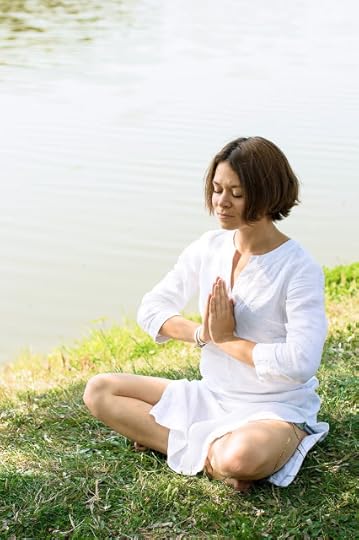
Do you want to awaken the Kundalini energy and attain spiritual enlightenment? Are you looking to advance your inner guidance and live mindfully? Do you want to increase your vitality and well-being? Do you want to feel happier, healthier, and more energized? If so, Kundalini Yoga is what you need.
Kundalini Yoga is derived from Kundalini, defined in Vedantic culture as the energy that lies dormant at the base of the spine until it is activated (by the practice of yoga) and directed upward through the chakras in the process of spiritual glory.
Until it moves, it's almost non-existent. Because of this, Kundalini is symbolized as a snake because it's so hard to see a coiled-up snake unless it moves. Likewise, you can't see this coiled-up energy unless it moves. Miraculous things will happen to you if your Kundalini is aroused. The pouring of a completely new level of energy begins, and your body and everything starts to act in a completely different way.
It is believed to be the power associated with the divine feminine. Kundalini Yoga is influenced by the Shaktism and Tantra schools of Hinduism. It derives its name by a focus on the awakening of Kundalini energy through regular practice of Mantra, Tantra, Yantra, Yoga, or Meditation.
Over the last few years, Kundalini Yoga has grown in popularity. It is actually a synthesis of Bhakti Yoga (devotion and chanting), Raja Yoga (meditation), and Shakti Yoga (expression of power and energy). However, it may include Hatha yoga techniques (Bandha, Pranayama, and Asana), Patanjali's Kriya Yoga (consisting of self-discipline, self-study, and devotion to God), Tantric visualization and meditation techniques of Iaya yoga (known as Samsketas), and other techniques geared towards the 'Awakening of Kundalini.'
This energy is said to flow through the Ida (left), Pingala (right), and central or Sushumna Nadi—the major channels of Pranic energy in the body. A recent study showed that the mechanism may be regulated by the Vagus nerve.
The outcome simply means that Mother Earth's energy rises up the spine and ultimately merges with the sun and the cosmic energy in Crown Chakra, so our body is hopefully a mere source for Earth's energy that merges with higher spiritual forces in our body. In order for this to happen, one must become "enlightened," that is, keep his/her chakras open and clean of any 3D energies that clog chakras including panic, concern, anxiety, anger, jealousy, etc.; only then will one be unified with the world.
A typical Kundalini Yoga class comprises the following parts:
1. Opening chant
2. Pranayamas
3. Kriyas
4. Relaxation
5. Meditation
6. Closing chant
• Every class begins with an Opening Chant, also known as tuning in. From base to top of the head, the opening chant vibrates the entire spine. Practicing it helps us start, experience, and celebrate the Divine resonance of Kundalini energy within us.
• You will do breathing exercises called Pranayama and also move your spine occasionally. Pranayama is used to link mind, body, and breathing (spirit) through mindful breathing exercises. Pranayama's goal is to regulate the breath. Different pranayama has different effects and can create a strong chemical change in the body when coupled with movements.
• Your Drishti—where you set your gaze during your physical practice—is used to deepen your focus and awareness.
• The Kriya comprises a sequence of Mantras, Asanas, Mudras, and Bandhas.
- Mantras are incorporated throughout to use sound therapy and the sound vibrations within your body.
- Asanas and repeat motions are used to relieve body stress and transfer energy around the body to strengthen, stretch, and release.
- Mudras, the hand gestures incorporated into your practice, are energy ‘seals’ using the magnetic and electrical polarities in the fingers and hands.
- Bandhas are useful to brain centers, chakras, and nadis. It purifies power channels, eliminates blockages, and improves energy exchange. Bandhas minimized emotional restlessness and tension and provides inner harmony and balance.
• Kriyas are followed by a long Relaxation, where students lie down in Savasana and rest, allowing the glandular system to secrete, the nervous system to adjust, and the entire body system to absorb all the effects that occurred during kriyas. It’s a moment of tremendous healing.
• Kundalini Meditation is part of Kundalini Yoga and is intended to transfer energy through your body. The aim of this method of releasing energy from the body is to create a means of communication between the mind and the body to ease mental, physical, and spiritual problems.
• The class concludes with a Closing Chant. The common closing chant that you will hear in the Kundalini class is 'Sat Nam,' which means 'I am the truth.' This is Gurmukhi for, 'Truth is my identity,' or 'Truth is my essence.' It is used as a salutation as well as a mantra for Kundalini Yoga exercises, inhaling Sat (truth), exhaling Nam (name, identity). Sat Nam is about the realization of your true self. The closing chant is a true melodic celebration as this mantra vibrates through the spine, activates the chakra system, and awakens the Kundalini. It confirms the universal consciousness in everyone.
Kundalini Awakening Phases
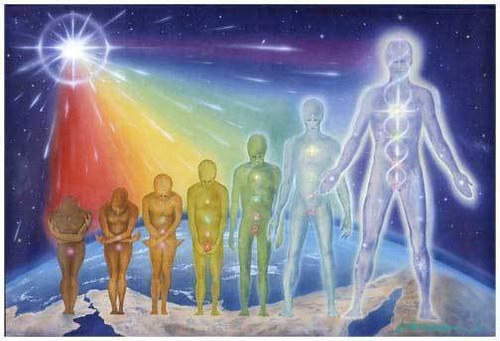
The Kundalini awakening phase is in 4 stages. The phases are:
1. Awakening Phase (Arambha): This Brahma Knot is opened in the first stage.
2. Cleansing Phase (Ghata): The second seal in the direction of Kundalini is the Vishnu Knot, which is the lock of the Heart Chakra.
3. Absorption Phase (Pacihaya): This is the point in which the cleaning is performed.
4. Final Phase (Nishpatti): This is the point when Kundalini passes through the Third Eye Chakra to the Crown Chakra. Through the opening of the Crown Chakra, one will attain self-realization, cosmic realization, and then Yoga.
If you replied “YES” to any of these issues, you should perform Kundalini Yoga. It'll unleash your inner wisdom and improve your vitality and well-being, apart from paving your way towards spiritual enlightenment.
Some Beginners Tips
• Kundalini Yoga should be performed barefoot.
• The beginner may feel at first a little out of the comfort zone, but that's all right. If they continue with it, the positive effects of the practice will be experienced. I had a friend who opposed his first class all the way. In the end, he encountered an intense emotional relief that convinced him of the power of this practice immediately. That’s the power of Kundalini Yoga; it works like magic.
• If it is possible, I would suggest beginners to initiate their Kundalini Yoga classes in a group setting. The consciousness of group energy produced during Kundalini classes can be exquisite. For a home practice, I’d suggest getting a good beginner’s DVD, and sticking with that for at least 40 days. That might seem like a long time, but it allows the beginner to really feel the inner and outer changes. The beginner will have their own unique experience with the teachings, but for me personally (and for many yogis I know), the practice helps one feel very calm, present, rejuvenated, and expansive—like they can hold and generate more light. Words can’t really describe it… it must be experienced!
• It is fine to use music shaped for Kundalini Yoga kriyas and sets, but it should not be used in meditations.
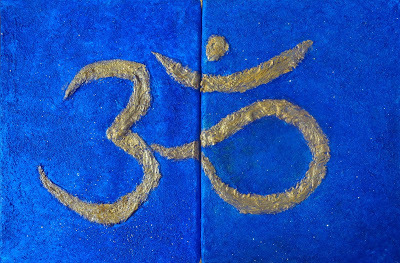
• Beginners Kundalini Yoga Attitude: Be committed and trust in the Universal Forces to guide, nourish, and deliver you. Kundalini Yoga is a very powerful science, and you will find it an invaluable asset in helping you reach and surpass your maximum potential.

In this book, I will explain the science behind Kundalini Yoga, the power of Kundalini, and once awakened through Kundalini Yoga, Kundalini meditation that helps transfer the energy to the upper chakras. The guide will include Kundalini kriyas, asanas, different breathing techniques, and Kundalini meditation.
This Kundalini Yoga sequence is designed to fully awaken the spinal column, the central nervous system, and Sushumna Nadi's main energy channel. It’s a great practice to keep the spine flexible, cultivate radiant energy flow, and maintain youthfulness and vitality.
So if you want to awaken your Kundalini energy, develop inner guidance, increase vitality and wellbeing, and feel happier, healthier, and more energized, claim the book right away!!

or reload the browserDisable in this text fieldEditEdit in GingerEdit in Ginger×Enable GingerCannot connect to Ginger Check your internet connection
or reload the browserDisable in this text fieldEditEdit in GingerEdit in Ginger×Enable GingerCannot connect to Ginger Check your internet connection
or reload the browserDisable in this text fieldEditEdit in GingerEdit in Ginger×
Yoga For Beginners: Kundalini Yoga

Do you want to awaken the Kundalini energy and attain spiritual enlightenment? Are you looking to advance your inner guidance and live mindfully? Do you want to increase your vitality and well-being? Do you want to feel happier, healthier, and more energized? If so, Kundalini Yoga is what you need.
Kundalini Yoga is derived from Kundalini, defined in Vedantic culture as the energy that lies dormant at the base of the spine until it is activated (by the practice of yoga) and directed upward through the chakras in the process of spiritual glory.
Until it moves, it's almost non-existent. Because of this, Kundalini is symbolized as a snake because it's so hard to see a coiled-up snake unless it moves. Likewise, you can't see this coiled-up energy unless it moves. Miraculous things will happen to you if your Kundalini is aroused. The pouring of a completely new level of energy begins, and your body and everything starts to act in a completely different way.
It is believed to be the power associated with the divine feminine. Kundalini Yoga is influenced by the Shaktism and Tantra schools of Hinduism. It derives its name by a focus on the awakening of Kundalini energy through regular practice of Mantra, Tantra, Yantra, Yoga, or Meditation.
Over the last few years, Kundalini Yoga has grown in popularity. It is actually a synthesis of Bhakti Yoga (devotion and chanting), Raja Yoga (meditation), and Shakti Yoga (expression of power and energy). However, it may include Hatha yoga techniques (Bandha, Pranayama, and Asana), Patanjali's Kriya Yoga (consisting of self-discipline, self-study, and devotion to God), Tantric visualization and meditation techniques of Iaya yoga (known as Samsketas), and other techniques geared towards the 'Awakening of Kundalini.'
This energy is said to flow through the Ida (left), Pingala (right), and central or Sushumna Nadi—the major channels of Pranic energy in the body. A recent study showed that the mechanism may be regulated by the Vagus nerve.
The outcome simply means that Mother Earth's energy rises up the spine and ultimately merges with the sun and the cosmic energy in Crown Chakra, so our body is hopefully a mere source for Earth's energy that merges with higher spiritual forces in our body. In order for this to happen, one must become "enlightened," that is, keep his/her chakras open and clean of any 3D energies that clog chakras including panic, concern, anxiety, anger, jealousy, etc.; only then will one be unified with the world.
A typical Kundalini Yoga class comprises the following parts:
1. Opening chant
2. Pranayamas
3. Kriyas
4. Relaxation
5. Meditation
6. Closing chant
• Every class begins with an Opening Chant, also known as tuning in. From base to top of the head, the opening chant vibrates the entire spine. Practicing it helps us start, experience, and celebrate the Divine resonance of Kundalini energy within us.
• You will do breathing exercises called Pranayama and also move your spine occasionally. Pranayama is used to link mind, body, and breathing (spirit) through mindful breathing exercises. Pranayama's goal is to regulate the breath. Different pranayama has different effects and can create a strong chemical change in the body when coupled with movements.
• Your Drishti—where you set your gaze during your physical practice—is used to deepen your focus and awareness.
• The Kriya comprises a sequence of Mantras, Asanas, Mudras, and Bandhas.
- Mantras are incorporated throughout to use sound therapy and the sound vibrations within your body.
- Asanas and repeat motions are used to relieve body stress and transfer energy around the body to strengthen, stretch, and release.
- Mudras, the hand gestures incorporated into your practice, are energy ‘seals’ using the magnetic and electrical polarities in the fingers and hands.
- Bandhas are useful to brain centers, chakras, and nadis. It purifies power channels, eliminates blockages, and improves energy exchange. Bandhas minimized emotional restlessness and tension and provides inner harmony and balance.
• Kriyas are followed by a long Relaxation, where students lie down in Savasana and rest, allowing the glandular system to secrete, the nervous system to adjust, and the entire body system to absorb all the effects that occurred during kriyas. It’s a moment of tremendous healing.
• Kundalini Meditation is part of Kundalini Yoga and is intended to transfer energy through your body. The aim of this method of releasing energy from the body is to create a means of communication between the mind and the body to ease mental, physical, and spiritual problems.
• The class concludes with a Closing Chant. The common closing chant that you will hear in the Kundalini class is 'Sat Nam,' which means 'I am the truth.' This is Gurmukhi for, 'Truth is my identity,' or 'Truth is my essence.' It is used as a salutation as well as a mantra for Kundalini Yoga exercises, inhaling Sat (truth), exhaling Nam (name, identity). Sat Nam is about the realization of your true self. The closing chant is a true melodic celebration as this mantra vibrates through the spine, activates the chakra system, and awakens the Kundalini. It confirms the universal consciousness in everyone.
Kundalini Awakening Phases

The Kundalini awakening phase is in 4 stages. The phases are:
1. Awakening Phase (Arambha): This Brahma Knot is opened in the first stage.
2. Cleansing Phase (Ghata): The second seal in the direction of Kundalini is the Vishnu Knot, which is the lock of the Heart Chakra.
3. Absorption Phase (Pacihaya): This is the point in which the cleaning is performed.
4. Final Phase (Nishpatti): This is the point when Kundalini passes through the Third Eye Chakra to the Crown Chakra. Through the opening of the Crown Chakra, one will attain self-realization, cosmic realization, and then Yoga.
If you replied “YES” to any of these issues, you should perform Kundalini Yoga. It'll unleash your inner wisdom and improve your vitality and well-being, apart from paving your way towards spiritual enlightenment.
Some Beginners Tips
• Kundalini Yoga should be performed barefoot.
• The beginner may feel at first a little out of the comfort zone, but that's all right. If they continue with it, the positive effects of the practice will be experienced. I had a friend who opposed his first class all the way. In the end, he encountered an intense emotional relief that convinced him of the power of this practice immediately. That’s the power of Kundalini Yoga; it works like magic.
• If it is possible, I would suggest beginners to initiate their Kundalini Yoga classes in a group setting. The consciousness of group energy produced during Kundalini classes can be exquisite. For a home practice, I’d suggest getting a good beginner’s DVD, and sticking with that for at least 40 days. That might seem like a long time, but it allows the beginner to really feel the inner and outer changes. The beginner will have their own unique experience with the teachings, but for me personally (and for many yogis I know), the practice helps one feel very calm, present, rejuvenated, and expansive—like they can hold and generate more light. Words can’t really describe it… it must be experienced!
• It is fine to use music shaped for Kundalini Yoga kriyas and sets, but it should not be used in meditations.

• Beginners Kundalini Yoga Attitude: Be committed and trust in the Universal Forces to guide, nourish, and deliver you. Kundalini Yoga is a very powerful science, and you will find it an invaluable asset in helping you reach and surpass your maximum potential.

In this book, I will explain the science behind Kundalini Yoga, the power of Kundalini, and once awakened through Kundalini Yoga, Kundalini meditation that helps transfer the energy to the upper chakras. The guide will include Kundalini kriyas, asanas, different breathing techniques, and Kundalini meditation.
This Kundalini Yoga sequence is designed to fully awaken the spinal column, the central nervous system, and Sushumna Nadi's main energy channel. It’s a great practice to keep the spine flexible, cultivate radiant energy flow, and maintain youthfulness and vitality.
So if you want to awaken your Kundalini energy, develop inner guidance, increase vitality and wellbeing, and feel happier, healthier, and more energized, claim the book right away!!

or reload the browserDisable in this text fieldEditEdit in GingerEdit in Ginger×Enable GingerCannot connect to Ginger Check your internet connection
or reload the browserDisable in this text fieldEditEdit in GingerEdit in Ginger×
September 19, 2020
Ayurveda For Beginners: Vata
Ayurveda, which derives from ancient Vedic scriptures, is a 5,000 year-old medical ideology and philosophy based on the idea that we are all made up of different types of energy.
There are three Doshas in Ayurveda that describe the dominant state of mind/body: Vata, Pitta, and Kapha. While all three are present in everyone, Ayurveda suggests that we each have a dominant Dosha that is unwavering from birth, and ideally an equal (though often fluctuating) balance between the other two. If Doshas are balanced, we are healthy; when they are unbalanced, we develop a disorder commonly expressed by skin problems, impaired nutrition, insomnia, irritability, and anxiety.
Vata, Pitta, and Kapha are all important to our biology in some way, so no one is greater than, or superior to, any other. Each has a very specific set of basic functions to perform in the body.
That said, when the Doshas are out of control, our wellbeing can be damaged. However, before we get into the particulars of each of the three Doshas, it is helpful to understand their basic nature and their wider function in the natural world.
Throughout Ayurveda, the most basic building blocks in the material world are the five elements: space, air, fire, water, and earth.
Vata is characterized by the mobile nature of Air (Wind) energy.
Pitta embodies the transformative nature of Fire energy.
And Kapha reflects the binding nature of Water energy.
I’ve made a complete series on these three, one for each. This is The Vata; the other two are also available.
Because Pitta and Kapha cannot pass without it, Vata is assumed to be the chief of the three Ayurvedic Standards in the body. It is therefore really important to keep Vata in a good balance.
What's The Meaning of Vata?
Vata is the invisible force of movement — composed of space and air. This controls breathing, blinking, contraction of muscle and tissue, pulsation of the heart, and all movements of the cytoplasm and cell membranes. Vata encourages innovation, creativity, and versatility in a balanced way. But it also causes fear and anxiety when out of control.
Vata reflects the energy of motion and is therefore always associated with the wind (and the element of the air). Vata is related to creativity and flexibility; It controls all movements — the rhythm of the breath, the pulsation of the heart, all muscle contractions, tissue motions, cell mobility — and coordination across the mind and the nervous system.
Physical:
· Constipation
· Disturbed or lack of sleep
· Sensitiveness to cold and desire for warmth
· Dry and rough skin
· Roughness, especially skin and lips
· Pains and general body-ache
· Astringent taste in the mouth
· Tremors and twitches
· Feeling dizzy or spaced out
· Gas formation or distension in the abdomen
· Dehydration
· Loss of strength, fatigue, low vitality
Behavioral:
· Irrational, Anxious, Nervous, Agitated, Impatient
· Excessive movement: anxiety, fidgeting, agitation, muscle twitching, palpitations
· Wanting to run away
· Feeling confused, fearful & shaky
· Feeling ungrounded
Vata Dosha controls the rhythm and motion of the body. Answer these questions to see if you're going to have to balance Vata.
1. Is your skin dry, rugged, and thin?
2. Are you underweight?
3. Is your mind always in a whirl?
4. Do you stress incessantly?
5. Are you constantly irritated or restless?
6. Do you have constipation?
7. Do you have insomnia?
8. Do you have vaginal dryness?
9. Have you had the symptoms of forgetfulness?
10. 10. Do you have pain in the joints?
11. Are you tired easily?
If you answered yes to most of these questions, you have to balance Vata.
2. Avoid Tastes That Increase and Decrease Vata
3. Go For Oil Massage (Abhyanga)
4. Take Account of Your Diet
5. Take Herbal Support
6. Implant Healthy Lifestyle Habits
Tastes That Pacify Vata
Salty
-It is mainly composed of elements of water and fire that make it heavy, oily, moist, and warm.
-Aids the appetite, metabolism, absorption, assimilation, elimination, and is also anti-flatulent.
-It nourishes and promotes growth, muscle strength, and flexibility.
-It helps to cultivate courage and respect and can therefore counter Vata's tendency to fear.
-It is antispasmodic and has an affinity for the nervous system, where many Vata imbalances occur.
-It moisturizes the body and helps maintain the balance of the electrolyte water, which is easily disrupted by excess Vata.
-Its energy moves downwards and stabilizes the Vata.
-The salty taste is almost uniquely derived from the salt itself, but favoring the salty taste does not mean that your food should taste like it was cured.
-Salt is already over-emphasized in the typical Western diet, so simply being mindful of tasty flavors and ensuring that your food has some salt in it is likely to be sufficient.
-Ayurveda recommends high-quality sea salt or natural mineral salt over common table salt.
-Salt stimulates appetite and digestion, helps maintain moisture, promotes proper elimination, and improves the flavor of many foods.
Precaution:
The salt taste should be minimized in cases of water retention, ulcers, hypertension, aggravated blood, or excess Pitta—unbalances that may not be associated with Vata but may still be present in people with Vata constitutions or imbalances.
Reduce:
Pungent
-Pungent is a hot, spicy flavor found in chilies. Radishes, turnips, raw onions and many, particularly are heating spices.
-It is mainly composed of fire and air elements that make it hot, dry, light, and sharp.
-It's extremely drying.
-It is exceptionally stimulating and can cause tremor, insomnia, and pain in the muscles.
-Reproductive tissues may be depleted.
-Vata imbalances such as mental confusion, dizziness, fainting, excess thirst, malaise, fatigue, emaciation, and constipation may be exacerbated.
-It can amplify Vata's high level of excitement, clarity, and expansiveness, which can lead to exhaustion, burnout, idleness, or dizziness.
-It’s upward moving and lightening energy tends to destabilize the Vata.
-However, in moderation, the majority of mild spices are quite Vata-pacifying. Be warned, though, as too much of it can be drying and actually disturb Vata.
-The pungent taste is hot, dry, and light; too much of it is extremely dry to the body, exacerbates the rough consistency, and can therefore annoy Vata.
Bitter
-This is the taste that comes in the form of bitter greens (such as kale, dandelion greens, collard greens, etc.) or foods such as bitter melon, Jerusalem artichokes, burdock root, eggplant, and chocolate.
-It is mainly composed of elements of air and ether (the same elements that predominate in Vata) and is very cold, light, and dry.
-It amplifies Vata's tendency towards extreme cold.
-Dries the muscles and tissues, and removes fluids from the body.
-It tends to scrape and deplete.
-It may worsen Vata disorders such as dry mouth, emaciation, fatigue, constipation, bone loss, sexual impairment, and depleted Ojas.
-Confusion, dizziness, nausea, and discomfort may be triggered.
-Vata's tendency towards feelings of boredom, separation, isolation, and loneliness may be exacerbated.
-As it is cooling, rough, drying and light, the bitter taste will further aggravate this Dosha in you.
-The bitter taste is cooling, raw, rough, drying, light, and usually lowering or catabolic— all qualities that aim to aggravate Vata.
Astringent
-This flavor has a gritty, dry feeling in the mouth–picture sipping a strong black coffee. This is also why it elevates Vata.
-It is mainly composed of elements of air and earth
-It is dry, cold and heavy (making it particularly sensitive to Vata's delicate digestion)
-It has a specific affinity to the colon — the seat of Vata — and its qualities are inherently Vata-provoking.
-This continues to scratch and deplete.
-Vata conditions such as gas, bloating, constipation, dry mouth, speech difficulties, stiffness, spasms, emaciation, insomnia, and sexual weakness may be exacerbated.
-Physical and emotional constriction can be caused, contributing to stagnation.
-Vata's tendency to feel scattered and disorganized or even fearful, anxious, and nervous may be exacerbated.
-The astringent taste is found in legumes (such as beans and lentils), fruit (including cranberries, pomegranates, pears, and dried fruit), vegetables (such as broccoli, cauliflower, artichoke, asparagus, and turnip), grains (such as rye, buckwheat, and quinoa), spices and herbs (including turmeric and marjoram), coffee and tea.
-The astringent taste is essentially a dry taste — a chalky taste that dries the mouth and may cause it to contract. For example, it's the taste you get while you're eating a green raw banana.
-Legumes are classically astringent of taste — adzuki beans, black beans, black-eyed peas, chickpeas, pinto beans, soybeans, and so on.
-The astringent flavor is dry, cold, heavy, and rugged in nature, making it understandably aggravating to Vata.
• Seek to get to bed by 10 pm, wake up by 6 am and eat your meals on a regular basis.
• Avoid getting chilled: Wear appropriate clothes for the season and keep your head covered when the weather is cold.
• Avoid cold food & beverages and go to warmth.
• Drink room temperature water instead of cold or ice water and drinks.
• Add flavor nourishing food to light food.
• Prefer smooth over rough also helps to tackle the problem of Vata imbalance.
• Prefer moist over oily and dry food is the best way to keep your Vata healthy & solid.
• Say no to raw or undercooked food if you are looking for a definite answer to the question of how to balance Vata Dosha.
• Vata types find it very difficult to sustain daily routines, such as eating and sleeping consistently. But this is the most important thing they have to do. When Vata is out of sync, it may seem nearly impossible, but an effort to establish a regular routine is very necessary for all people with a Vata body type.
• Regular workouts should be relaxed and mild. Regular exercise in a meditative mood is healthy, as are yoga, chi gong, tai chi, walking, biking, hiking, and swimming. Avoid tough, stressful, and chaotic practices. Associate, if possible, with those who are relaxed and purposeful. Meditate for deep relaxation every day.
 Enable GingerCannot connect to Ginger Check your internet connection
Enable GingerCannot connect to Ginger Check your internet connectionor reload the browserDisable in this text fieldEditEdit in GingerEdit in Ginger×Enable GingerCannot connect to Ginger Check your internet connection
or reload the browserDisable in this text fieldEditEdit in GingerEdit in Ginger×
September 11, 2020
Who Are You: The Spiritual Awakening Self Discovery Guide For Enlightenment And Liberation
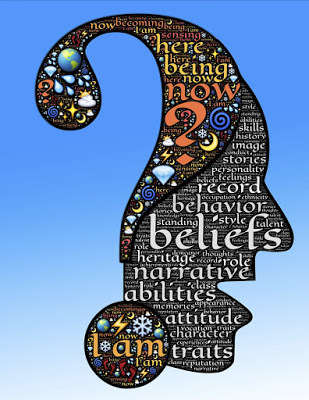
Have you ever thought after reaching your goal, why aren’t you happy? It’s because that is not what you need to be happy.
The major problem today in this world is that everyone is searching for joy in materialistic objects like money, fame, respect, and whatever. But the fact is, the most successful personalities in the world which you admire so much are not happy at all! If that was the case, they won’t ever get depressed or sad. Is that what the reality is? No, in fact, they’re the one who takes depression therapies and drugs to be happy.
What are all the fundamental problems that we all face? There is a sense of lack that exists in all of us, a sense of loneliness, a sense of incompleteness, a sense of being restricted, a sense of fear, fear of death. So these fundamental problems can only be overcome through self-investigation; there’s no other way around.
Being happy is a basic nature of human beings, just like the basic nature of fire is hot. But the error we make is we’re searching for happiness outside, which is impossible to achieve. Say, you wanted something for a very long time; what happens after you achieve it? You’ll be happy for a while, but then you’ll need something else to be happy, you’ll then run after some other goal; it’s an endless cycle!
The good thing is, there’s a way to be happy at every moment, but to make it happen you must understand in a peaceful state of mind “Who Are You?”
You’ll have to self-enquire! If you do so, all your fears and doubts will come to an end; not temporarily, but forever. All internal conflicts will fall to zero, and psychological pain will cease to exist.
Basically, we all encounter two kinds of problems; the first is subjective or personal problems at a superficial level that you may have but I don’t, or I may have but you don’t. This means that one person may have a problem but another may not have that.
The other is the fundamental problems which every individual has at a deeper level, be they the poorest of the poor or the richest of the rich. Be it India, The United States, The United Kingdom, anywhere, there won’t be a single person who doesn’t suffer from these problems. These are the issues that we need to address.
In fact, all the questions you ask are from your own viewpoint, like I have this problem or I’m suffering from this or that. But we never ask if I really am or not. “Who are you?”
If you think of yourself as another person or entity, then the whole discussion is pointless, whatever you are questioning or thinking if ‘I’ in the first place is misplaced. Let’s say you think, ‘I’m a body,' then whatever you ask thinking you really are, a body, is wrong.
A body is being born, a body dies; different people are associated with the body, this happened to the body or that happened to the body, whatever it may be. There may be unlimited problems, but we never ask ourselves, ‘Am I really a body or not?’
Just because the entire world thinks they’re just limited to their bodies, so even I assume that I’m a body and question things based on ‘Me’ being a body. In that case, you’re even listening to me thinking you are a body. How will you understand anything then? So assume nothing, listen with an open mind.
What are all the fundamental problems that all of us face then? There is a sense of lack that exists in all of us, a sense of loneliness, a sense of incompleteness, a sense of being restricted, a sense of fear, and fear of death. Therefore, these fundamental problems can only be overcome through self-investigation; there’s no other way around.
Let’s just assume your problem is, ‘You’re restless.’ Is restlessness the issue that only one person faces, or is it something that all the humanity faces?
So there are two kinds of scripture, one of which will tell you how you can resist this restlessness for some time. Meaning, just do this and you’ll have peace of mind for a little while, do this then this will happen, or do this then that will happen. Practice what is written in these scriptures, obey it, and regulate your desires. Control your rage, control your greed, control your attachments, and your expectations; and a day will come when you'll be fully enlightened.
What’s the other way around? Whatever the truth is, whether you accept it or not, things are being declared. That’s just what the Ashtavakra Geeta is!
But in order to realize the truth, you need to put your notions aside. Any preconceived notions or opinions or feelings you might have, you need to set them behind and see things as they are. Please keep on reading, what will happen is that the truth will be revealed.
Is the desire for happiness just limited to a person or does everyone wants to be happy? Everyone wants it! The quest for happiness ends by knowing the truth. Because I’m happy, I don’t need to search for it! The search for the truth ends as you realize that I am the truth.
All this racing around the mind is what we call restlessness. The mind doesn’t seem to be still for a second. Why is that happening? This happens when you feel like, ‘I need to be somewhere’, ‘I need to get somewhere’, ‘I need to do something’, or ‘I need to be something'.
Everyone is trying to do things to put an end to the restlessness in them, to forget about the restlessness in them. The fact that they’re trying to do this is basically an issue. The moment we realize that I am absolutely complete, all the restlessness dies.
What’s the root cause of all the problems? It’s because we never wonder why we keep chasing something or the other. They’re all doing it, so I do it, too. Everyone’s going in different directions, though, not all of them are going the same way. One wants this; the other one wants something different.
We idealize one of these directions and start to follow it but when we finally reach the destination, there’s actually nothing there. Then we see someone else, or we’ll get drawn to something else, and we’ll start running in that direction. And when we actually get there, there’s nothing there either.
So, what’s the solution to all this? Tell me one thing; do you think the rich people you admire so much are satisfied or happy? Of course not, otherwise they may not be taking drugs and anti-depressant to feel well. USA, which is the richest nation, has leading number of depression cases (16.2 million adults in the United States, or 6.7 percent of American adults).
Therefore, stay right where you are; Be the one you are. You don’t need to do anything! The dilemma you’re facing is that you think you have to reach somewhere. You may assume, for example, that I have to attain enlightenment. What is enlightenment now? Every concept of enlightenment will be different. Everyone has some preconceived notions, ‘If I can get this, I’ll be enlightened’, or ‘I’ll be enlightened when I see the God’, whatever.
Let’s say you got engaged to the girl you liked, is it the end of your restlessness or will there still be conflicts? So how are we going to get rid of this restlessness? There’s someone telling you, you don’t need to do something, just take a step back to relax and listen to what I’ve got to say. If you really understand that you don’t need to go anywhere you’re already there!
So do you need thoughts then, this is called the state of thoughtlessness. Many could not understand this; they believe that thoughtlessness means either a state of intense concentration or deep sleep. But that’s not the case; you’ve got to wake up after a while, right? You’re going to break the focus at some point? Is this the solution?
When does the problem exist? When you’re sleeping, when you’re in a state of intense concentration, or when you’re wide awake? It’s when you’re awake! So in that situation, the solution needs to be sorted out. We’re going to get nervous the moment we wake up. Why is this happening? This happens when we believe we need to do something, action or karma is something that needs to be understood, but not theoretically. Leave behind all the myths you’ve read about, try to understand what action really is, what thought means.
You need to plan; you need physical activity, and you need a lot of other things if you want to go from one location to another. You need a time unit, money too, you’ll have to fight. So the fight, the emotions, the action comes to an end temporarily when you reach where you want to go. But it’s only a short time, whether it’s in the material world or the spiritual world.
But then again, because of your old pattern of thinking new thoughts develop in your mind and the fight starts again. This is a cycle that never ends. It’s a loop; It’s a loop that never ends.
If I feel awful, I might find happiness in eating something. Now that I’ve had this, the thought ends temporarily, when the task is finished the thought ceases to exist, when it is taken care of we feel relaxed. Then the desire comes again, and the cycle begins again.
This is what happens: action and reaction, cause and effect, cause and effect. What will happen is that we tire out of this.
This is just one way. The other way around is that you don’t need to move at all, to move in the sense that, ‘I want to be someone or I want to do something’. You don’t need that kind of thinking because you’re already what you need to be. Just sit back and understand who you really are once you’ve fully understood the research has already been completed.
Finally, there is no need for information or words to help you see the reality. All the clutter of words, then, will cease to exist. When you travel from one place to another, is it necessary to think of reaching that place? No, the idea comes to an end!
But what’s going to happen is that another impulse emerges that I need to go somewhere or do something because the feeling of incompleteness also persists. But once you realize that I don’t need to go anywhere I don’t need to change then the feeling of incompleteness ceases to exist, not only momentarily, yet forever.
You won’t have to be detached from anything; it’s like fuel in a car. When we believe that whatever is in this universe is equivalent to the fuel in a car, I’m on a path, a journey to understand the “Self.” Then for this reason whatever I collect, it’s all equivalent to the fuel the car needs to run. So I’m not really attached to the fuel, I’m just centered on the journey. It’s called abstinence!
If you want to know in-depth, "Who Are You?" Consider reading my book:
Who Are You: The Spiritual Awakening Self Discovery Guide For Enlightenment And Liberation
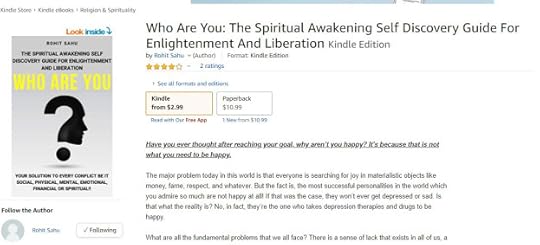
This is not just another self-help book; this spiritual workbook will help you achieve liberation and be self-enlightened!
Reading this book:
✔️You’ll attain everlasting peace
✔️You’ll understand the real meaning of spiritual awakening
✔️You’ll understand spirituality over religion
✔️You’ll get the answer to 'Who Are You?'
✔️You’ll be fearless
✔️You’ll be free from bondage and be able to achieve liberation
✔️You’ll get the key to everlasting happiness and joy
✔️You’ll grasp the real essence of spirituality and the awakening self
✔️You’ll get to know about spirituality for the skeptic
✔️You’ll discover your higher self
✔️You’ll be able to experience the joy of self-realization
✔️You’ll find what spiritual enlightenment means in Buddhism
✔️You’ll know how to achieve or reach spiritual enlightenment
✔️You’ll know what happens after spiritual enlightenment
✔️You'll get the answer to why you should have spiritual awakening





Enable GingerCannot connect to Ginger Check your internet connection
or reload the browserDisable in this text fieldEditEdit in GingerEdit in Ginger×Enable GingerCannot connect to Ginger Check your internet connection
or reload the browserDisable in this text fieldEditEdit in GingerEdit in Ginger×
September 2, 2020
Chakras for Beginners: A Guide to Understanding 7 Chakras of the Body
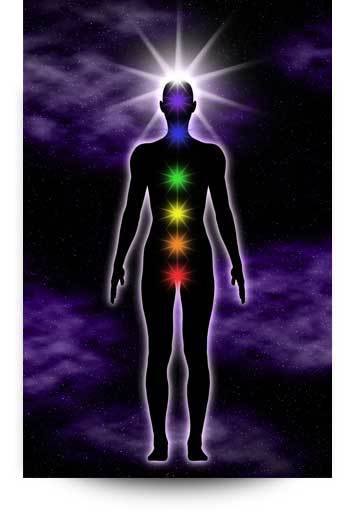
Chakras are the circular vortexes of energy that are placed in seven different points on the spinal column, and all the seven Chakras are connected to the various organs and glands within the body. These Chakras are responsible for disturbing the life energy, which is also known as Qi or Prana.
They are virtually in the form of a fluid, and if they block and stop moving, energy cannot flow in our bodies. It is because there is an intimate connection between the spirit, soul, the mind, and the whole body.
Whenever a Chakra is disrupted or blocked, the life energy also gets blocked, leading to the onset of mental and health ailments. When the harmonious balance of the seven Chakras is disrupted or damaged, it can cause several problems in our lives, including our physical health, emotional health and our mental state of mind.
If all our Chakras are balanced and in harmony, our body will function in an optimum way; If unbalanced, our energies will be like in a small river where the water will flow irregularly and noisy. By balancing our Chakras, the water/our energies will flow more freely throughout our body and thus the risk of imbalances and consequently illnesses will be reduced to a minimum.
There are 7 main energy centers in our subtle body that influence our life, starting from Root Chakra to the Crown Chakra. Any issues one has in one's life is because these Chakras are not activated and aligned.
What is referred to as a third eye is not necessary like these two eyes we got.
There is too much of “Chakra talk” going on everywhere. Especially in the West, wherever you go, there are “wheel alignment centers” where they claim to “align” your seven Chakras. From yoga studios to chiropractics, everybody is talking about it these days. That has become a fad. But though everybody only talks about seven Chakras, there are actually 114 Chakras in the body.
What Are the 7 Chakras?
You can see them as 114 junctions or confluences of 'Nadis.' The Nadis are the channels of prana (Life-giving force) in the energy body. These junctions are always in the form of triangles. They are called Chakras because they embody movement from one dimension to another, and the word “Chakra” means “wheel” or “circle.” But they are actually triangles.
Out of these 114 Chakras, two are outside the physical body. Of the remaining 112, only 108 can actually be worked upon, the remaining four just flower as a consequence. The number 108 has manifested in the human system because it is a significant number in the making of the solar system. The diameter of the sun and the distance between the earth and the sun is 108 times. The diameter of the moon and the distance between the earth and the moon is 108 times. The diameter of the sun is 108 times the diameter of the earth. And hence, 108 is significant in various spiritual practices.
These 112 Chakras arrange themselves into seven dimensions, with sixteen aspects in each dimension. Instead of going into 112, which is too much of a number for a lot of people, generally, only seven were spoken about because of these seven categories or seven dimensions. It is these seven dimensions that are generally being referred to as the 7 Chakras, which are in turn the basis for the seven schools of yoga.
From 112 to 7 Chakras
For a human being to live a full-fledged physical and social life, he needs only twenty-one Chakras in his body to be active. These 21 Chakras are also connected with the number seven.
The Location & Names of the 7 Chakras
The seven fundamental Chakras are known as Root Chakra (Muladhara), which is located at the perineum, the space between the anal outlet and the genital organ; Sacral Chakra (Svadhisthana), which is just above the genital organ; Solar Plexus (Manipuraka), which is just below the navel; Heart Chakra (Anahata), which is just beneath where the rib cage meets; Throat Chakra (Vishuddhi), which is at the pit of the throat; Third Eye (Ajna), which is between the eyebrows; and Crown Chakra (Sahasrara), also known as Brahmarandra, which is at the top of the head, where when a child is born, there is a soft spot.
Chakras have more than one dimension to them. One dimension is their physical existence, but they also have a spiritual dimension.
We can speak in terms of lower and higher energy centers, but such language is often and too easily misunderstood. It is like comparing the foundation of a building to the roof. The roof is not superior to the foundation. The foundation of the building is more basic to the building than the roof. The quality, life span, stability and security of the building depend to a large extent on the foundation rather than the roof. But in terms of language, the roof is higher, and the foundation is lower.
Chakras for Beginners: A Guide to Understanding 7 Chakras of the Body: Nourish, Heal, And Fuel The Chakras For Higher Consciousness And Awakening!
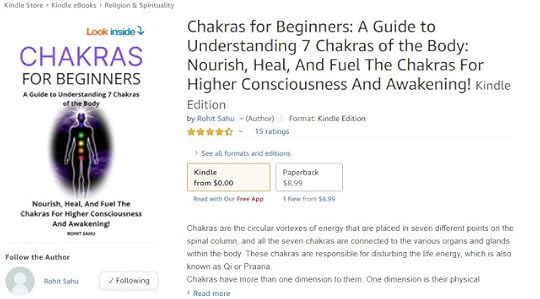

Enable GingerCannot connect to Ginger Check your internet connection
or reload the browserDisable in this text fieldEditEdit in GingerEdit in Ginger×Enable GingerCannot connect to Ginger Check your internet connection
or reload the browserDisable in this text fieldEditEdit in GingerEdit in Ginger×
August 30, 2020
Follow These 4 Easy Tips to Lose Weight without Diet or Exercise!
It’s true, exercise is key to weight loss as it helps you burn calories, thus leading to a greater weight loss. But what if exercise or diet is not your thing?
You would be surprised to know how just making some simple changes in your daily lifestyle can actually help you lose weight without putting much effort. You can easily cut pounds without crash dieting or doing any other intense workouts.
Here are the 4 best things you can do to lose weight without diet or exercise!
#1. Make Yourself Confident and Be Focused to Lose Weight

Mental barriers can really hold you back. Sometimes we don’t even realize how much. Fortunately, once we’re aware of the limitations we create for ourselves, we can finally move forward.
Deep-rooted beliefs can be hard to break, but once we understand the importance of our mindset, it changes everything.
And that’s what you have to go for! Change your mind and everything changes. Ask yourself: what body shape would you like to see yourself in a year and start believing that you’re attaining that body shape of yours in the exact same spot as you are now?
Also, make every small effort that can help you lose even a few calories! Whether it be eating a few cheese slices less in your burger or eating just enough to feel satisfied.
#2. Have a Calorie Balanced, Less Carb and More Protein Meal Every Time

Knowing that you’re never too far away from your next meal or snack prevents you from getting to that hungry place where you’ll eat the first thing you see.
Having something to eat every three to four hours keeps your blood sugar level on an even keel. Just make sure you keep those meals well balanced. Whether it’s a meal or a snack, the components matter.
Protein-rich foods take more energy to burn than other foods, while fat and fiber slow down the rate. The result? You burn more calories and feel satisfied with less, both of which are important if weight loss is your goal.
#3. Avoid Artificial Sweeteners and Sugars

We hear it from everyone that cutting on sugar is always good for our health & weight loss issues!
Especially now that there are so many low-calorie options made using artificial sweeteners: sugar-free gum, sugar-free drinks, sugar-free ice cream are quite common.
But do you think using them as an excuse to keep eating sweet foods and substituting one reward pathway for another is going to be helpful?
Well, studies show artificial sweeteners users don’t always lose weight, and that they may not be armed against diabetes. Yes, diet soda is always a better choice than a sugar-sweetened one, but it’s not as conducive to weight loss as switching to water or even milk can be.
#4. Finish All Your Meals by 8 PM

Have you heard the warning of never eating after 8 p.m. or you’ll gain weight? Cutting off food after 8 PM in some ways can be easy and in some ways hard!
The one challenging part is going out to dinner. By the time an average dinner finishes up is well past 10, and when you do that, you’ll want to go right to sleep due to your regular sleeping schedule.
So you have to be punctual for your dinner, it doesn’t mean you can’t go out for dinner, just take care of the time & you’re good to go!
But one good part is by having your dinner before 8, you can skip the unhealthy evening snacks that can help you get trimmed faster.
There is no doubt that a balanced diet and a good fitness routine will get you those envious flat abs, but if exercising is not your thing. These 4 simple pointers will definitely help you reduce your fat without exercise.
“Do Something About Losing Weight Because Making Excuses Burns Zero Calories Per Hour!”Enable GingerCannot connect to Ginger Check your internet connection
or reload the browserDisable in this text fieldEditEdit in GingerEdit in Ginger×
August 24, 2020
Who Should Perform Power Yoga??

Since Power Yoga incorporates many forms and techniques, which usually includes three distinct schemes, you can say that the advantages of performing Power Yoga are a lot more than just one particular yogic style. The fast-paced flow of movement in Power Yoga means that it's an excellent way to stay healthy, and you get the physical advantages of yoga, such as strength, flexibility, stamina, etc.

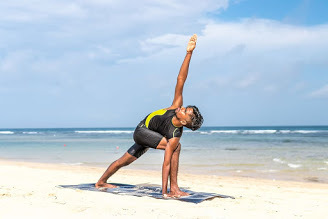


5. Do you want to build muscles?

6. Are you overweight and want to shed fat?
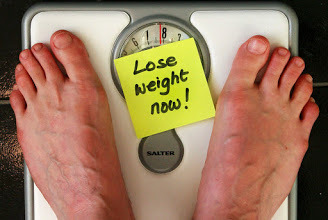
7. Are you looking to promote self-love?

8. Do you wish to lower your blood pressure?

9. Are you struggling with insomnia?

10. Do you want to achieve flawless skin?
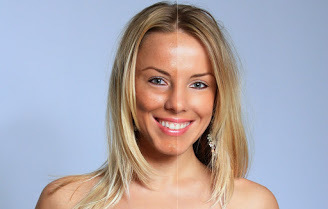
11. Are you looking to enhance bone strength?

12. Do you wish to get rid of stress and anxiety and want mental peace?

13. Are you struggling with weak or high blood circulation?

14. Do you have a bad posture?
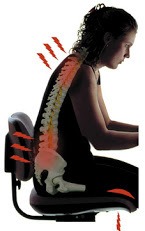
15. Do you want to achieve balance—in all aspects of well-being?

If you replied “YES” to any of these issues, you should perform Power Yoga. It’ll help you build up physical power, endurance, and versatility; you will also enjoy better circulation, a healthy body, and a relaxed mind.
Enable GingerCannot connect to Ginger Check your internet connectionor reload the browserDisable in this text fieldEditEdit in GingerEdit in Ginger×Enable GingerCannot connect to Ginger Check your internet connection
or reload the browserDisable in this text fieldEditEdit in GingerEdit in Ginger×Enable GingerCannot connect to Ginger Check your internet connection
or reload the browserDisable in this text fieldEditEdit in GingerEdit in Ginger×
August 21, 2020
What is Power Yoga??

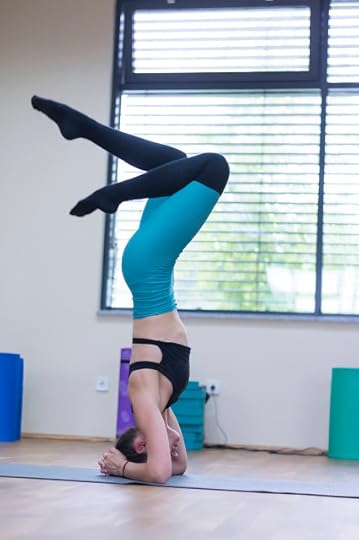
Power Yoga emerged in the 90s with "nearly simultaneous discovery" by two students of K. Pattabhi Jois, and similar types led by other yoga practitioners, including Rocket Yoga by Larry Schultz. Beryl Bender Birch developed what the Yoga Journal termed "the original Power Yoga" in 1995.
Power Yoga is popular and athletic; it’s the very essence of modern yoga. It's worth knowing Power Yoga, but even though it's one of the most popular types of yoga in the United States, it can be challenging to identify, because it is known by several names. Other names of Power Yoga are: Power Vinyasa Yoga, Power Flow, Hot Power Yoga, and Baptiste Power Yoga.
The discipline of Hatha Yoga includes different styles and degrees of intensity. Vinyasa Yoga is a more general term for dynamic and flowing yoga practice, which often has numerous varying degrees of intensity within the style. The word Power Yoga points mainly to the degree of physical intensity; it is an intense practice that can be referred to as a "workout."
Power yoga is a common concept used to define a rigorous, fitness-based approach to Vinyasa yoga. While many find power yoga to be a simplistic "gym yoga," this form of yoga practice was originally partly based on the athleticism of Ashtanga, with a number of Vinyasas (a series of sequential poses) which allows each practitioner the freedom to perform any poses in any sequence, making each session different. Via its focus on strength and flexibility, power yoga introduced fitness to America's gyms when people started to recognize yoga as a way to workout.
As power yoga is more physically demanding, it is more fun for those who are active as athletes and sportsmen.
Power yoga enthusiasts say it improves strength, flexibility, and focus. Like any other physical exercise, it relieves tension in the body, and sweating helps to remove contaminants. It is also said to improve posture and support people with back pain and spine issues by strengthening the bone structure.
In addition to helping to reduce tension and lower your blood pressure, power yoga is often very helpful for weight-loss. Asanas help boost your stamina and flexibility while helping to tone and strengthen your muscles.
In fact, several studies abroad have shown enormous benefits of Power yoga, like reduction in cholesterol and blood pressure, a rise in cardiovascular function, and even helping in de-clogging blocked arteries.
This Power Yoga practice will get your metabolism going, your body sweating, and your heart rate tone up; it’ll help you develop muscle mass and make you feel amazing.
All-in-all, if you're looking to enhance stamina, flexibility, posture, and mental focus, or want to lose weight, power yoga is for you. Your body will feel incredible and your mind will be at peace. It's the perfect workout for both!
or reload the browserDisable in this text fieldEditEdit in GingerEdit in Ginger×Enable GingerCannot connect to Ginger Check your internet connection
or reload the browserDisable in this text fieldEditEdit in GingerEdit in Ginger×



